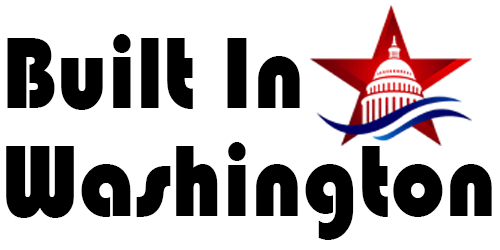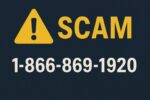The phishing ring behind the “pay invoice” lure has weaponized a toll‑free number, prompting unknowing PayPal users to dial.1-844-679-4024 appears legitimate, but calls to it lead to remote‑access software installs and stolen data. Victims wake up to emptied accounts, compromised identities, and months of cleanup. This post unpacks a rising phishing tactic where fraudsters send fake PayPal invoices 1-844-679-4024 and urge victims to call a toll‑free hotline, leading to forced installation of remote‑access software and severe data theft. You’ll discover how the scam unfolds, real‑world victim stories, and proven steps to safeguard your accounts and devices.
| Attribute | Details |
|---|---|
| First Detected | January 2024 |
| Scam Method | Fake PayPal invoice emails and spoofed support calls |
| Remote‑Access Tools | AnyDesk, TeamViewer |
| Typical Victims | U.S. PayPal users |
| Reporting Channels | phishing@paypal.com; ReportFraud.ftc.gov; donotcall.gov |
What is the 1-844-679-4024 Scam?
Scammers craft convincing PayPal‑style emails that claim you’ve been charged fraudulently and instruct you to call a “support” number immediately. Once you dial, they pose as customer‑service agents and pressure you to install remote‑access software, granting full computer control. This technique often results in stolen passwords, drained bank accounts, and identity exposure.
Anatomy of the Scam
Phishing Email Tactics
The initial email or SMS looks eerily authentic. Scammers replicate PayPal’s color palette, font choices, and header format. The sender address may read service@paypal‑secure.com—an almost plausible domain. An attached PDF invoice lists one or more large transactions, with invoice number, date, and merchant name. A prominent red warning box declares that your account will be locked within 24 hours unless you call the toll‑free number ConsumerAffairs.
Victims often glance only at the headline and attachment without scrutinizing link targets or sender metadata. A simple hover over any link often reveals a mismatched domain—something like paypal‑verify123.com. But by the time they spot it, panic has set in.
Social‑Engineering Tactics
Once you dial, the scammer greets you with a practiced script: “Thank you for calling PayPal Support, this is John—how may I assist you today?” They ask for your account email and the last four digits of your linked bank card to “verify your identity.” This faux‑verification builds trust.
Next, they escalate urgency: “We see multiple unauthorized transactions. Your account will be permanently limited if you don’t allow us to restore it now.” Under pressure, victims willingly follow instructions.
Remote‑Access Exploitation
The final phase unfolds on your screen. The caller directs you to download a legitimate application—AnyDesk or TeamViewer—from the official website. You click through prompts, granting full‑screen control and file‑transfer permissions. Instantly, the scammer can browse your files, capture screenshots of sensitive documents, record keystrokes, and install malware.
| Stage | Scammer’s Objective |
|---|---|
| Invite Download | Direct victims to legitimate remote‑access software sites |
| Grant Permissions | Acquire full screen and file‑transfer rights |
| Data Exfiltration | Copy passwords, financial details, personal documents |
| Persistence Installation | Plant keyloggers or backdoors for future access |
Overview of the 1-844-679-4024 Fake Invoice Email
A typical phishing email starts by referencing a large, unexpected payment. It attaches an invoice PDF listing transaction details and uses bold red text to heighten urgency, insisting you call immediately if you don’t recognize the charge. Rather than questioning the legitimacy, many recipients dial the provided number, inadvertently stepping into the trap.
Real Victim Experiences
Multiple users report waking up to drained PayPal balances and unfamiliar software installed on their PCs. One graphic designer found all client files uploaded to an unknown server; another e‑commerce seller discovered thousands of dollars transferred out under the guise of “verification fees”. These accounts underline how quickly scammers exploit remote access to monetize stolen data and credentials.
Preventing the Scam
Verify Through Official Channels
Avoid calling any number provided in unsolicited messages. Instead, go directly to paypal.com or the official PayPal app and navigate to the Help Center. There, you’ll find genuine contact options and dispute forms. PayPal explicitly warns: never click email links or call numbers that come through suspicious emails Federal Trade Commission.
Strengthen Account Security
Two‑factor authentication (2FA) adds a critical second barrier. Enable it on your PayPal and primary email accounts to ensure a code is required for logins. A password manager can generate and store complex, unique passwords—reducing the risk of credential reuse across sites, FinTech Futures.
Keep Software Updated
Regularly updating your operating system and antivirus tools closes vulnerabilities scammers exploit. Uninstall remote‑access software like AnyDesk or TeamViewer when you’re not using it; this prevents silent installs and unauthorized access
Reporting the Scam
Report to PayPal
Forward any phishing emails to phishing@paypal.com and then delete them. PayPal’s Security Center tracks these reports to shut down fraudulent domains and notify other users Federal Trade Commission.
File with the FTC
The Federal Trade Commission collects scam reports at ReportFraud.ftc.gov. Providing date, time, and transaction details helps the FTC trace scam networks and pursue legal action Consumer Advice.
Do‑Not‑Call Registry
Register your number at donotcall.gov and report repeat calls if they persist. While the registry won’t block all scammers, it provides another layer of defense and strengthens enforcement efforts.
Frequently Asked Questions
Q: How can I confirm whether an email is legitimately from PayPal?
A: Always hover over links to check their URL. Genuine PayPal emails come from a @paypal.com domain. If you’re unsure, log into your account directly—never click email links.
Q: Can I use AnyDesk or TeamViewer safely?
A: Yes, but only if you initiate the session. Never grant access to an unknown caller, and uninstall the software when not in active use.
Q: What if I already installed the software and suspect fraud?
A: Immediately disconnect from the internet, revoke remote‑access permissions, run a full antivirus scan, and change all passwords. Report the incident to PayPal and file with the FTC.
Q: Does PayPal ever call users directly about unauthorized transactions?
A: No. PayPal never demands immediate payment or remote‑access installs over unsolicited calls. All disputes are managed through their website or official app.
Q: How do I report unwanted calls that aren’t part of this scam?
A: Use your phone’s built‑in spam protection or a reputable call‑blocking app. For persistent unwanted calls, file with the FTC and register at the Do‑Not‑Call list.
Conclusion
By recognizing the hallmarks of this operation—spoofed invoices, high‑pressure calls, and unsolicited remote‑access requests—you can stop fraudsters in their tracks. Verify any suspicious alerts through PayPal’s official channels, harden your account security, and report scams promptly. Armed with this knowledge, you’ll be ready to defend yourself against evolving imposters and keep your data—and peace of mind—safe. That way, the 1-844-679-4024 scam loses its power.














